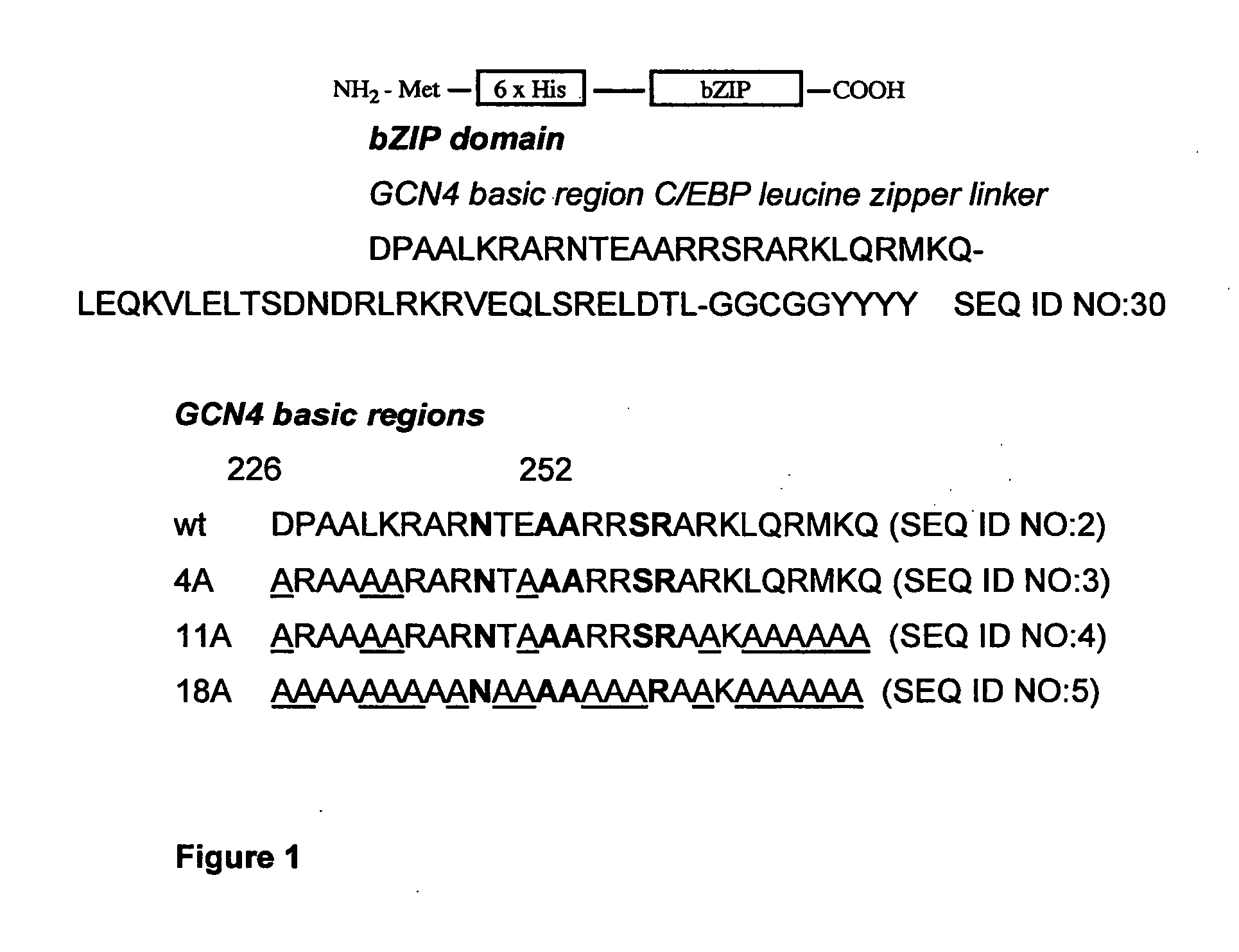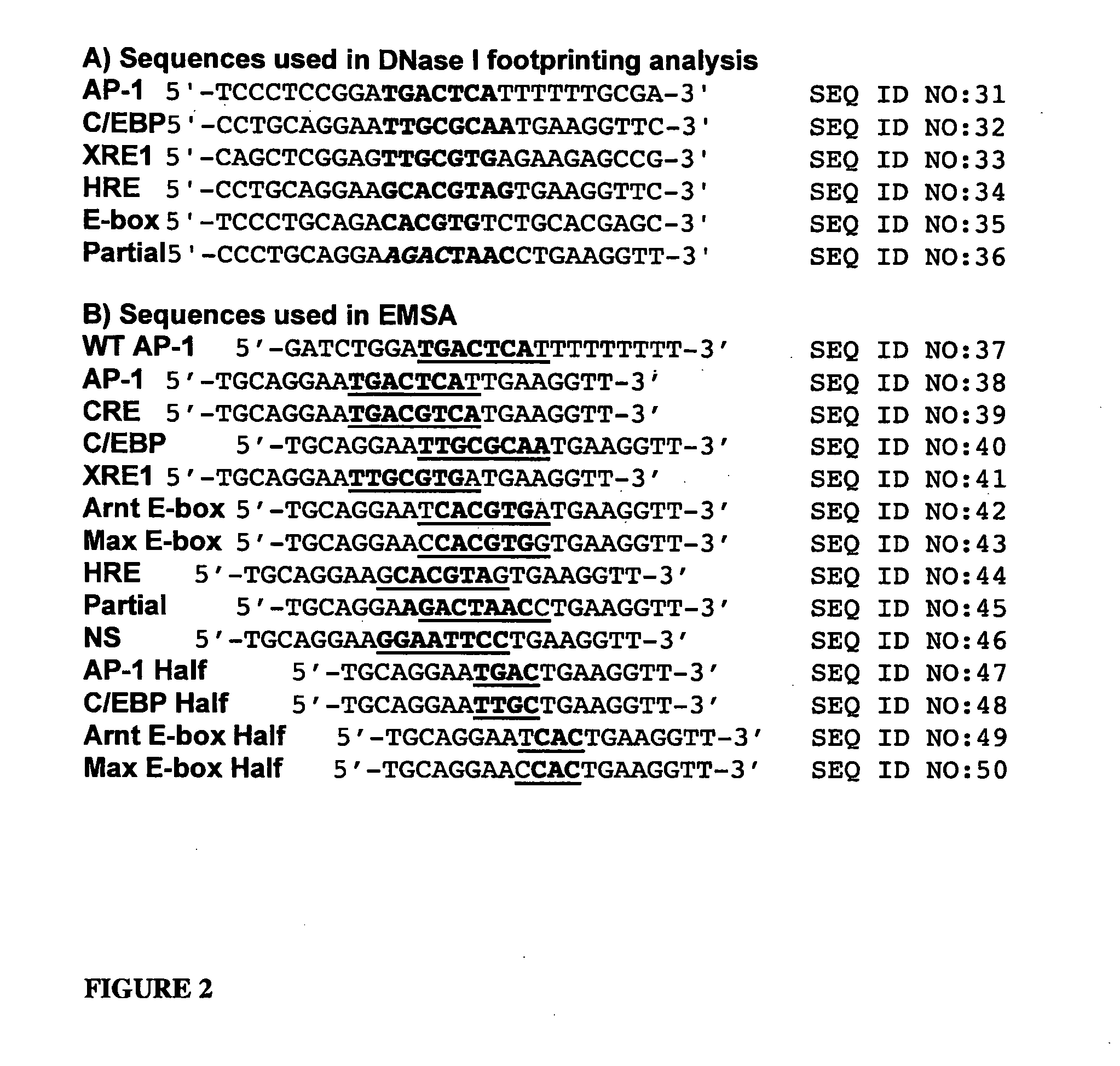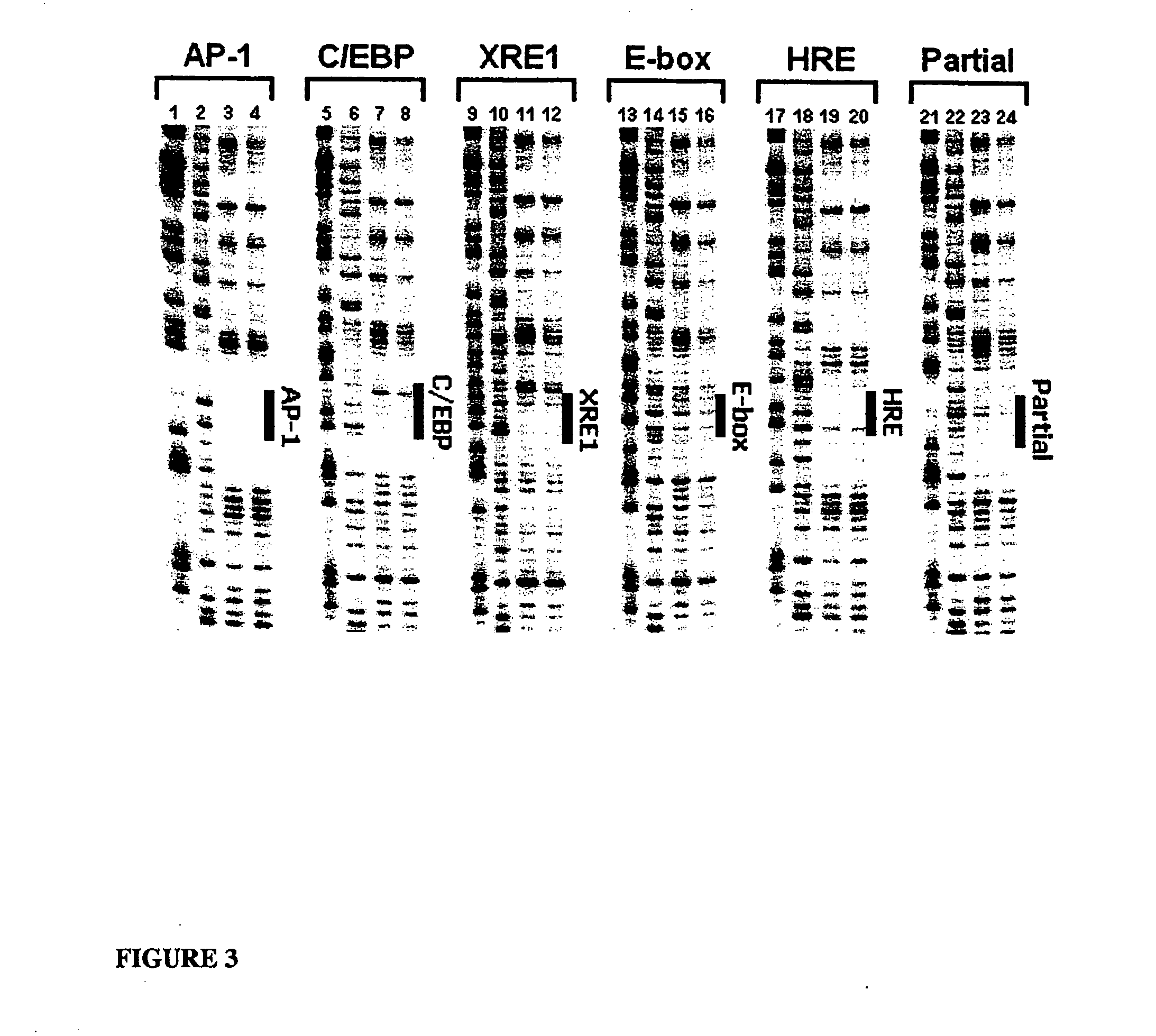Minimalist bZIP derivatives that bind to noncanonical gene regulatory sequences
a derivative and noncanonical technology, applied in the field of minimal derivatives, can solve the problems of complex dimerization elements in bhlh/bhlhz, affecting the activity of myc's disease-promoting activities, and the design of sequence-specific dna-binding proteins is a major challeng
- Summary
- Abstract
- Description
- Claims
- Application Information
AI Technical Summary
Problems solved by technology
Method used
Image
Examples
example
[0064] DNase I footprinting was used to demonstrate that the Ala-rich mutants bind specifically to the C / EBP consensus sequence (CCAAT / enhancer binding protein, 5′-TTGCGCM (SEQ ID NO:7)), which is bound by the C / EBP family of transcription factors that regulate genes involved in a variety of functions, including activation of constitutive and acute phase responsive genes in the liver, control of adipocyte differentiation, and regulation of inflammatory cytokine genes and other activities of monocytic cells (Johnson, P. F., Mol. Cell. Biol., 1993, 13, 6919-6930); the XRE1 site (xenobiotic response element 1, 5′-TTGCGTGA (SEQ ID NO:8)), which is a member of the xenobiotic response element family that lies in enhancers of target genes and when recognized by the aryl hydrocarbon receptor (AhR) and Arnt heterodimer, promotes transcription of a battery of xenobiotic-metabolizing enzymes—specifically XRE1 resides in the 5′-flanking region of the CYP1A1 (cytochrome p450) gene; the HRE site ...
PUM
| Property | Measurement | Unit |
|---|---|---|
| dissociation constant | aaaaa | aaaaa |
| volume | aaaaa | aaaaa |
| temperature | aaaaa | aaaaa |
Abstract
Description
Claims
Application Information
 Login to View More
Login to View More - R&D
- Intellectual Property
- Life Sciences
- Materials
- Tech Scout
- Unparalleled Data Quality
- Higher Quality Content
- 60% Fewer Hallucinations
Browse by: Latest US Patents, China's latest patents, Technical Efficacy Thesaurus, Application Domain, Technology Topic, Popular Technical Reports.
© 2025 PatSnap. All rights reserved.Legal|Privacy policy|Modern Slavery Act Transparency Statement|Sitemap|About US| Contact US: help@patsnap.com



